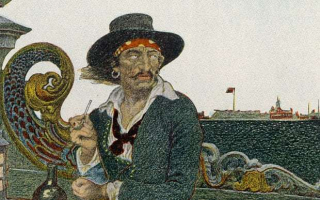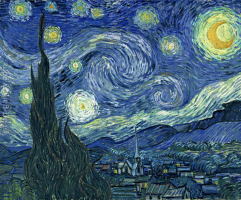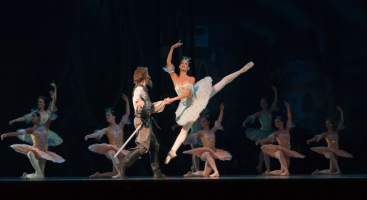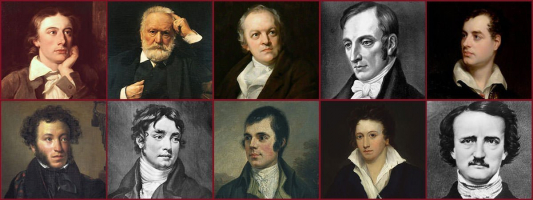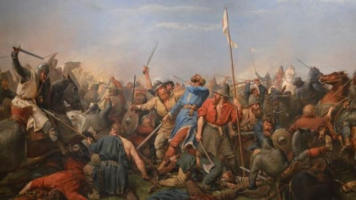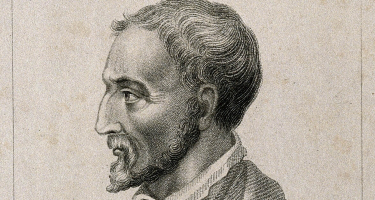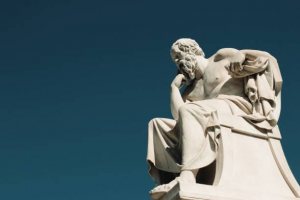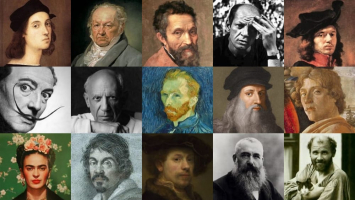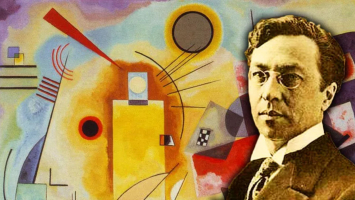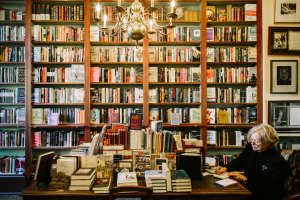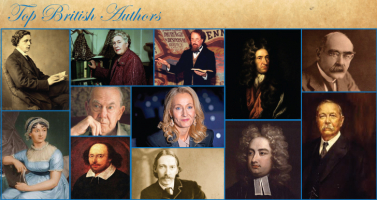Top 15 Most Famous Paintings Of All Time
Even with the advent of photography, cinema, and digital technologies, painting has remained a popular form of expression throughout history. Only a small ... read more...portion of the numerous paintings that have been preserved over many centuries and millennia can be considered "timeless classics" that are well-known to the general public—and which, coincidentally, were created by some of the most well-known artists of all time. Toplist has compiled the top most famous paintings of all time, hoping to provide useful information to readers.
-
This is one of the most famous paintings of all time. This kind of portrait was the inspiration behind the Mona Lisa, but with time, its significance changed, and it now stands as a symbol of the Renaissance and is arguably the most famous painting in the entire world. It has been called "the best known, the most visited, the most written about, the most sung about, and the most parodied work of art in the world" and is regarded as the paradigmatic masterpiece of the Italian Renaissance. Nevertheless, for whatever reason, the portrait was never given to its owner, and Leonardo carried it with him when he traveled to work for King Francis I of France. The enigmatic expression of the subject, the monumentality of the composition, the deft modeling of shapes, and the atmospheric illusionism are some of the painting's novel features.
Da Vinci's captivating portrait, which was painted between 1503 and 1517, has been the subject of two inquiries ever since it was created: Why is the subject smiling, and who is she? Over the years, a variety of ideas for the former have been put forth: That she is Caterina, Leonardo's mother, as imagined from his childhood memories of her; that she is the spouse of Florentine merchant Francesco di Bartolomeo del Giocondo (thus the alternative title for the piece, La Gioconda); and finally, that it is a self-portrait dressed as another person. Regarding that fabled smile, its enigmatic character has long baffled mankind. Whatever the cause, Leonardo's use of atmospheric perspective allows the idealized landscape behind Mona Lisa to fade into the distance while maintaining her expression of unnatural peace.
The French Republic now owns the picture, which King Francis I of France purchased. Since 1797, it has been on exhibit continuously at the Louvre in Paris. One of the most expensive works of art in the world is the Mona Lisa. With a US$100 million insurance valuation in 1962 (equivalent to $870 million in 2021), it currently holds the Guinness World Record for the highest known art insurance valuation in history.
Artist: Leonardo Da Vinci
Created: 1503
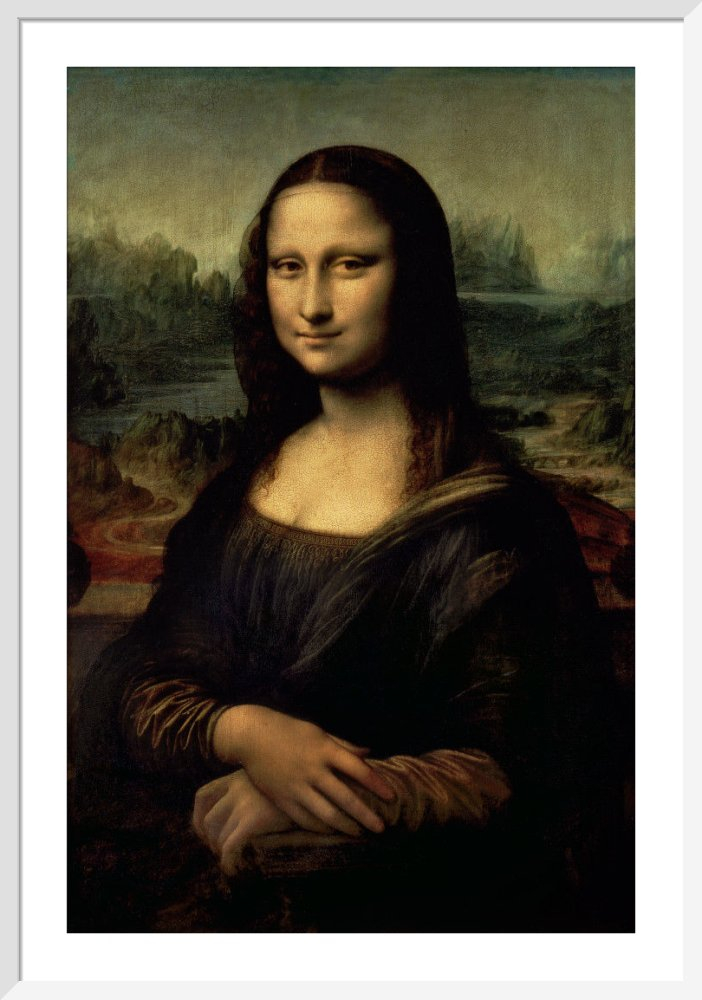
https://www.kingandmcgaw.com/ 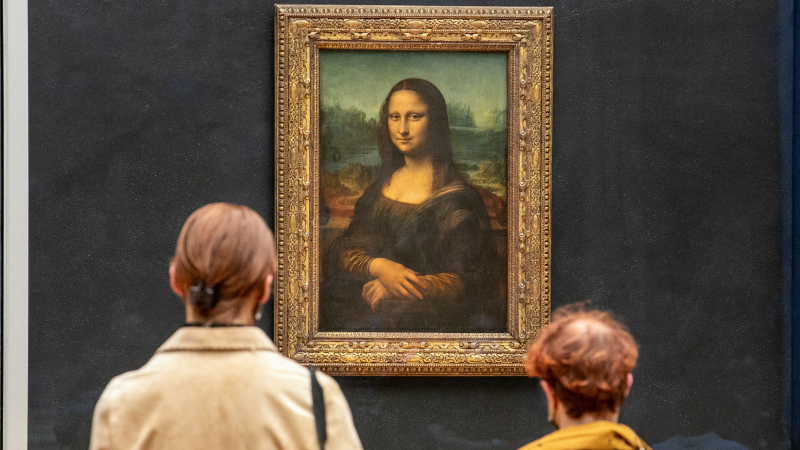
https://www.grunge.com/ -
The oil painting Girl with a Pearl Earring was created by Dutch Golden Age artist Johannes Vermeer. It has gone by several names throughout the ages, but at the close of the 20th century, it was given its current name in honor of the earring that the girl in the painting was wearing. Since 1902, the piece has been housed in the Mauritshuis collection in The Hague and has been the focus of numerous literary and filmic interpretations. This is one of the most famous paintings of all time.
The artwork is a tronie, the Dutch term for an unimpressive "head" from the 17th century. It shows a European female sporting an unusual outfit, an oriental headdress, and earrings that resemble a really huge pearl.The earring's material was questioned in 2014 by Dutch astronomer Vincent Icke, who asserted that the specular reflection, pear form, and size of the earring make it appear more like polished tin than pearl.The delicate color scheme and the closeness of the girl's stare toward the observer have been substantially improved since the painting's most recent restoration in 1994. It was discovered during the restoration that the black background, which is currently somewhat mottled, was originally a deep enamel-like green. The now-visible black backdrop was covered with a thin, translucent paint glaze to create this appearance. In contrast, the indigo and weld organic pigments of the green glaze have lost their color.
The young woman in Johannes Vermeer's 1665 study is astonishingly genuine and strikingly contemporary, almost like a snapshot. This raises the question of whether Vermeer used a camera obscura, a type of pre-photographic equipment, to generate the image. Aside than that, no one is certain who the sitter was, however it has been suggested that she might have been Vermeer's maid. She appears to be trying to establish an intimate connection across the ages as he paints her glancing over her shoulder and locking her eyes with the viewer. Technically speaking, Girl isn't a portrait at all, but an illustration of the Dutch headshot style known as a tronie, which is more of a still life of the contours of the face than an attempt to capture a resemblance.
Artist: Johannes Vermeer
Created: 1665
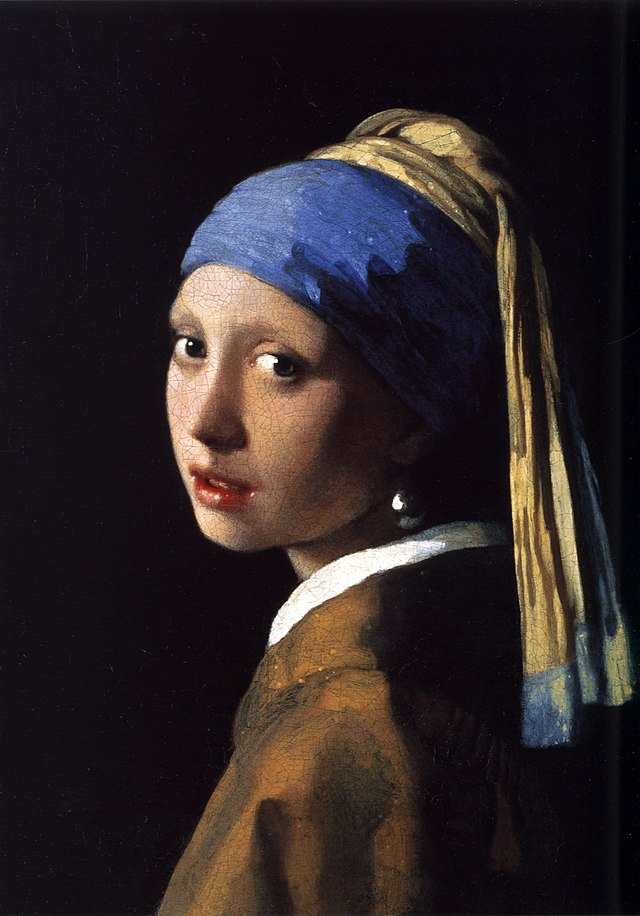
https://en.wikipedia.org/ 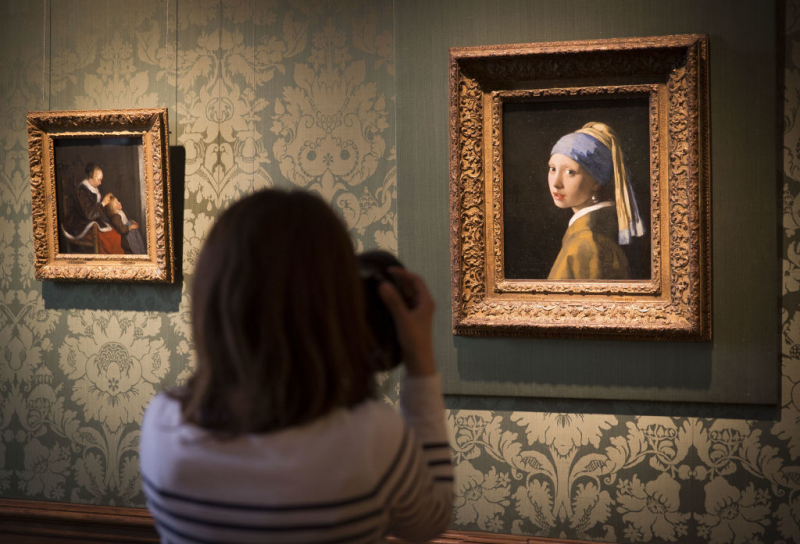
https://news.artnet.com/ -
Vincent van Gogh, a Dutch Post-Impressionist painter, created The Starry Night as an oil painting on canvas. It was painted in June 1889 and features an imagined settlement in addition to the early-morning vista from his asylum room's east-facing window in Saint-Rémy-de-Provence. As a result of the Lillie P. Bliss Bequest, it has been a part of the permanent collection of the Museum of Modern Art in New York City since 1941. The Starry Night, often regarded as Van Gogh's masterpiece, is one of the most well-known pieces in Western art. This is also one of the most famous paintings of all time.
Although Van Gogh painted The Starry Night in his ground-floor studio during the day, it would be incorrect to say that the image was created from memory. It has been determined that the scene is what Van Gogh saw out of his bedroom window, which faces east. Van Gogh painted variations of this scene no less than twenty-one times, including in The Starry Night. The scene was captured by Van Gogh at numerous times of the day and in a variety of weather situations, including the dawn, the moonrise, sunny days, cloudy days, windy days, and one day with rain.
The Starry Night, Vincent Van Gogh's most well-known picture, was produced by Van Gogh while he was a patient at the Saint-Rémy institution, where he had checked himself into in 1889. As the night sky comes alive with swirls and spheres of frenetically applied brush strokes arising from the yin and yang of his personal demons and awe of nature, The Starry Night does indeed seem to mirror his volatile state of mind at the time.
Artist: Vincent van Gogh
Created: 1889
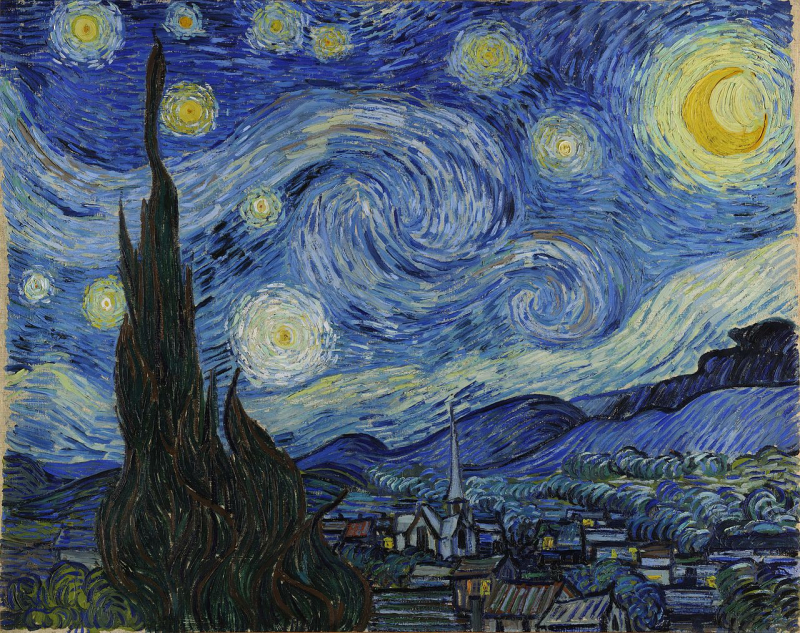
https://vnexpress.net/ 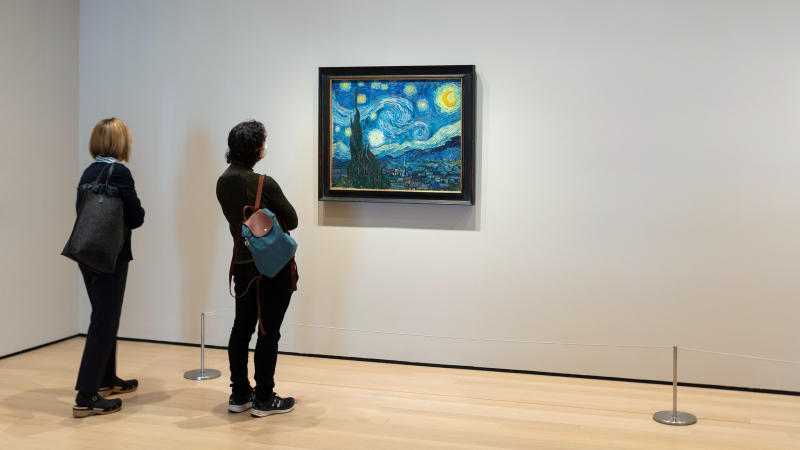
https://smarthistory.org/ -
Gustav Klimt, an Austrian Symbolist painter, created The Kiss as an oil painting on canvas with additional gold, silver, and platinum leaf. It was created somewhere between 1907 and 1908, during the height of what experts refer to as his "Golden Period." As mentioned in the exhibition book, it was shown in 1908 under the title Liebespaar (the lovers).
The artwork shows a couple cuddling, their bodies entangled in complex, lovely robes embroidered in a manner influenced by both the previous Arts and Crafts movement's organic forms and the contemporary Art Nouveau style. The artwork, which is currently on display in the Austrian Gallery Belvedere museum in Belvedere, Vienna, is regarded as Klimt's most well-known works and a masterpiece of the Vienna Secession.
The Kiss, a depiction of intimacy by Gustav Klimt from the turn of the century that is lavishly gilded and lavishly patterned, combines Vienna Jugendstil, an Austrian take on Art Nouveau, with Symbolism. Klimt presents his subjects as mythological beings who have been modernized by lavish surfaces of contemporary graphic elements. The piece is a high point of the artist's Golden Phase, which spanned 1899 to 1910 and was characterized by the frequent use of gold leaf. This technique was motivated by a 1903 trip to Ravenna, Italy's Basilica di San Vitale, where he witnessed the church's renowned Byzantine mosaics.
Artist: Gustav Klimt
Created: 1907 - 1908
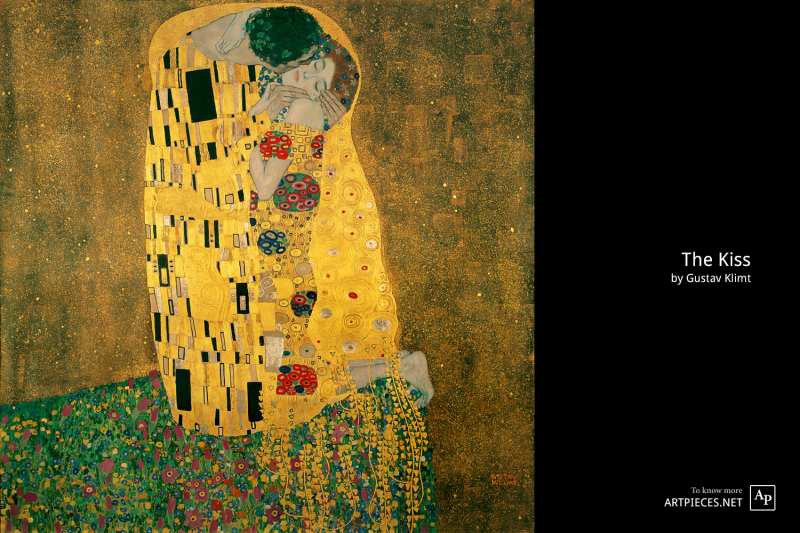
http://www.artpieces.net/ 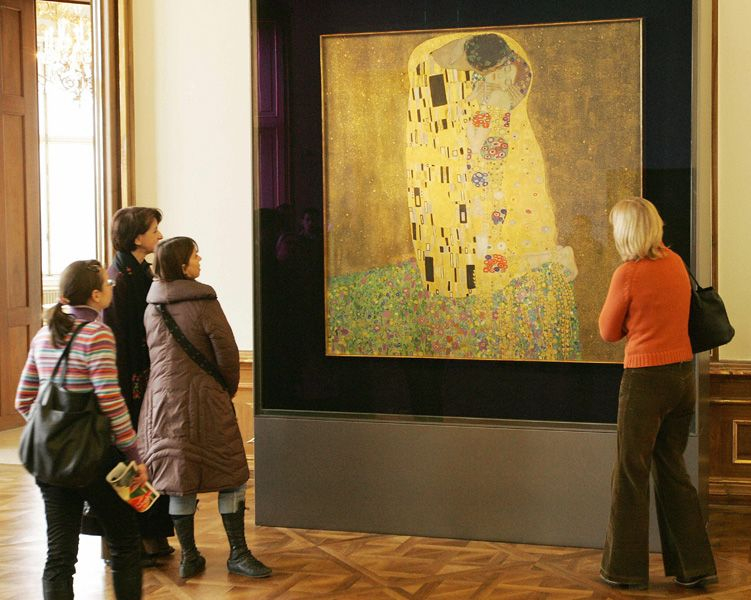
https://www.pinterest.com/ -
Italian painter Sandro Botticelli created The Birth of Venus, which was most likely completed in the middle of the 1480s. Following her birth, when she had emerged from the sea fully-grown, it shows the goddess Venus making her way to the shore (called Venus Anadyomene and often depicted in art). The painting is housed at Florence, Italy's Uffizi Gallery.
The Birth of Venus by Botticelli, which was created for Lorenzo de Medici, was the first full-length, non-religious nude since antiquity. The Goddess of Love is said to be based on Simonetta Cattaneo Vespucci, whose favors are said to have been shared by Lorenzo and his younger brother Giuliano. Zephyrus and Aura, the wind gods, are seen blowing Venus on a large clamshell to land where the personification of spring is waiting in a cloak.
Naturally, Venus enraged Savonarola, the Dominican monk who oversaw a fundamentalist crackdown on the Florentines' secular preferences. During his campaign, famed "Bonfire of the Vanities" in 1497 took place, in which "profane" items like books, paintings, and cosmetics were burned on a bonfire. The Birth of Venus was supposed to be burned, but luckily, it was spared. Botticelli, however, was so alarmed by the event that he temporarily stopped painting.Artist: Sandro Botticelli
Created: 1484–1486
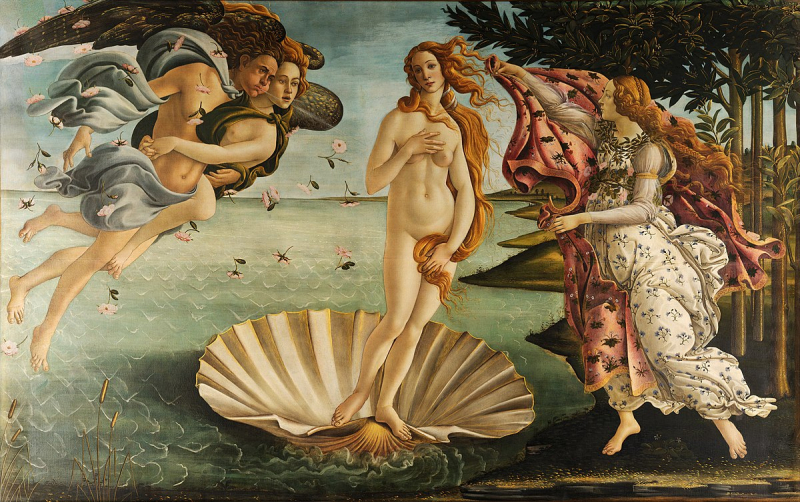
https://en.wikipedia.org/ 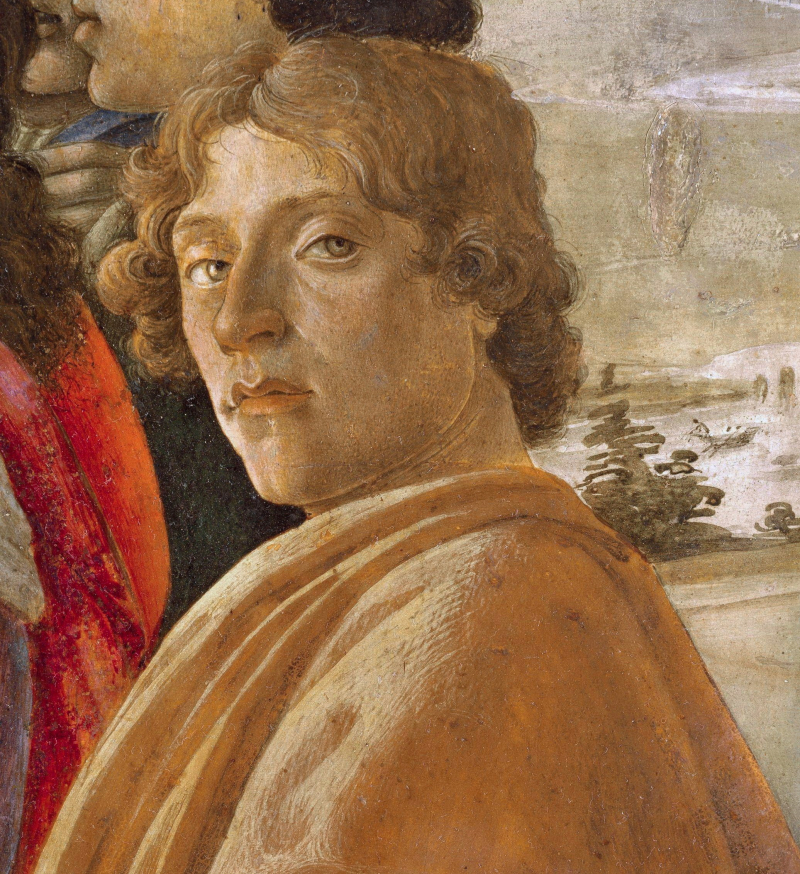
https://en.wikipedia.org/ -
The 1871 oil work Arrangement in Grey and Black No. 1 by James Abbott McNeill Whistler, an American-born artist, is also known by the slang term Whistler's Mother. Anna McNeill Whistler, Whistler's mother, is depicted in the artwork. The picture, which measures 56.81 by 63.94 inches (1,443 mm by 1,624 mm), is housed in a frame created by Whistler. After being purchased by the French government in 1891, it is now housed at the Musée d'Orsay in Paris. It is among the most well-known pieces created by an American artist outside of the country. It has been variably compared to a Victorian Mona Lisa and an American icon. This is also one of the most famous paintings of all time.
Whistler's Mother, also known as Arrangement in Grey and Black No. 1, expresses the artist's desire to create art for the sake of creating art. In the piece, which James Abbott McNeill Whistler created in his London studio in 1871, the formality of portraiture takes on the form of an essay. Anna Whistler, Whistler's mother, is depicted as one of several components arranged in a series of right angles. Despite Whistler's formalist goals, the picture came to represent motherhood because of her stern countenance, which blends in with the composition's rigidity.
Artist: James Abbott McNeill Whistler
Created: 1871
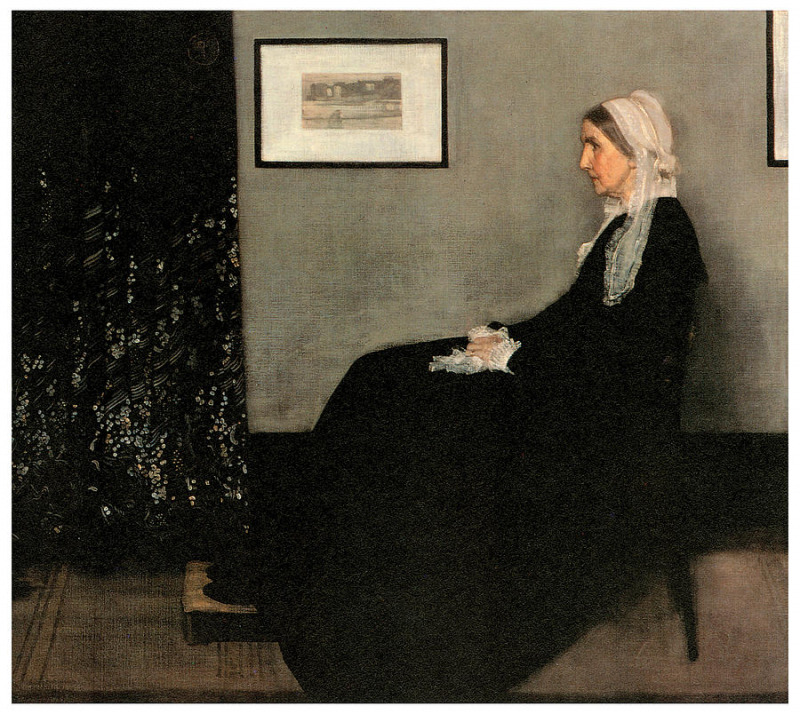
https://fineartamerica.com/ 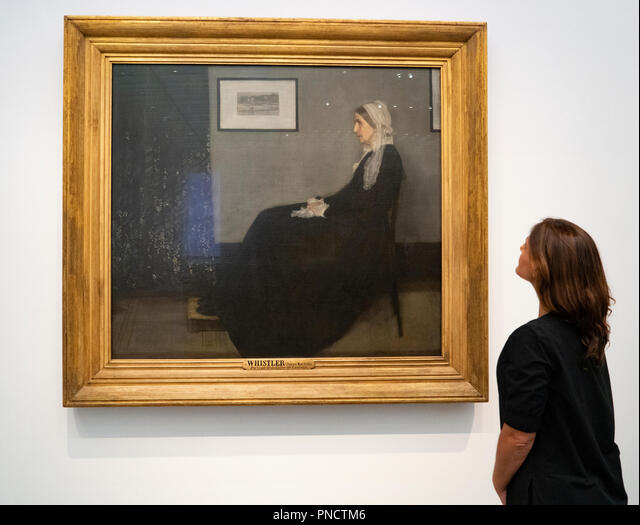
https://www.alamy.com/ -
The Early Netherlandish artist Jan van Eyck created The Arnolfini Portrait in 1434 as an oil painting on an oak panel. It is a full-length double portrait that is thought to show the Italian businessman Giovanni di Nicolao Arnolfini and his wife, most likely in their Bruges, Belgium, home. Its beauty, intricate iconography, geometric orthogonal perspective, and use of a mirror to expand the image space make it one of the most innovative and complicated paintings in Western art. The National Gallery in London acquired the artwork in 1842.
This composition, one of the most important works created during the Northern Renaissance, is said to be among the earliest oil paintings ever created. It is said to be a full-length double portrait of an Italian merchant and a woman who may or may not be his bride. The renowned art critic Erwin Panofsky said that the artwork is actually a marriage contract in 1934. It is safe to say that the painting is one of the first interiors to use orthogonal perspective to create a sense of space that is adjacent to the viewer's own; it has the appearance of a picture you could enter.
The painting's illusionism was noteworthy for its time due to its "utterly convincing picture of a room, as well as the people who occupy it," as well as its rendering of detail and use of light to imply space in an interior. According to Craig Harbison, the painting's significance depends on how the scene and its specifics are interpreted "is the sole remaining panel from the fifteenth century in Northern art in which the artist's contemporaries are seen taking part in some form of activity in a modern setting. It is tempting to refer to this as the first genre painting of the modern era because it depicts daily life ".
Artist: Jan van Eyck
Created: 1434
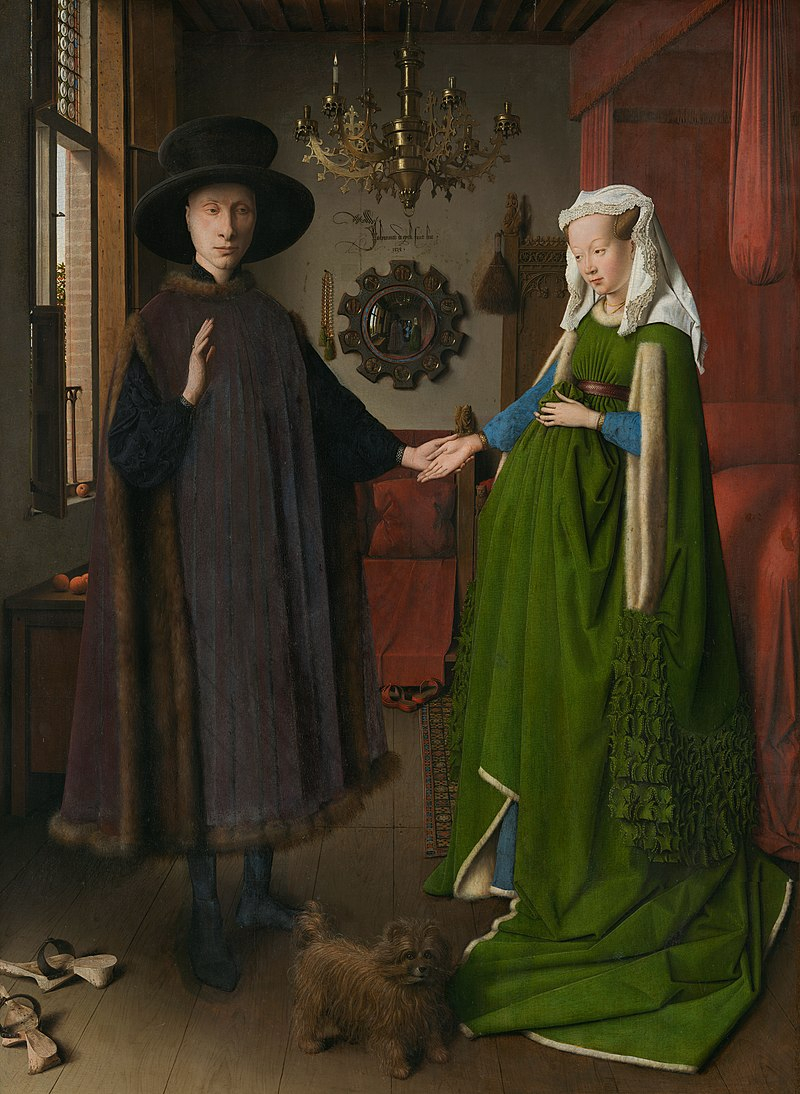
https://en.wikipedia.org/ 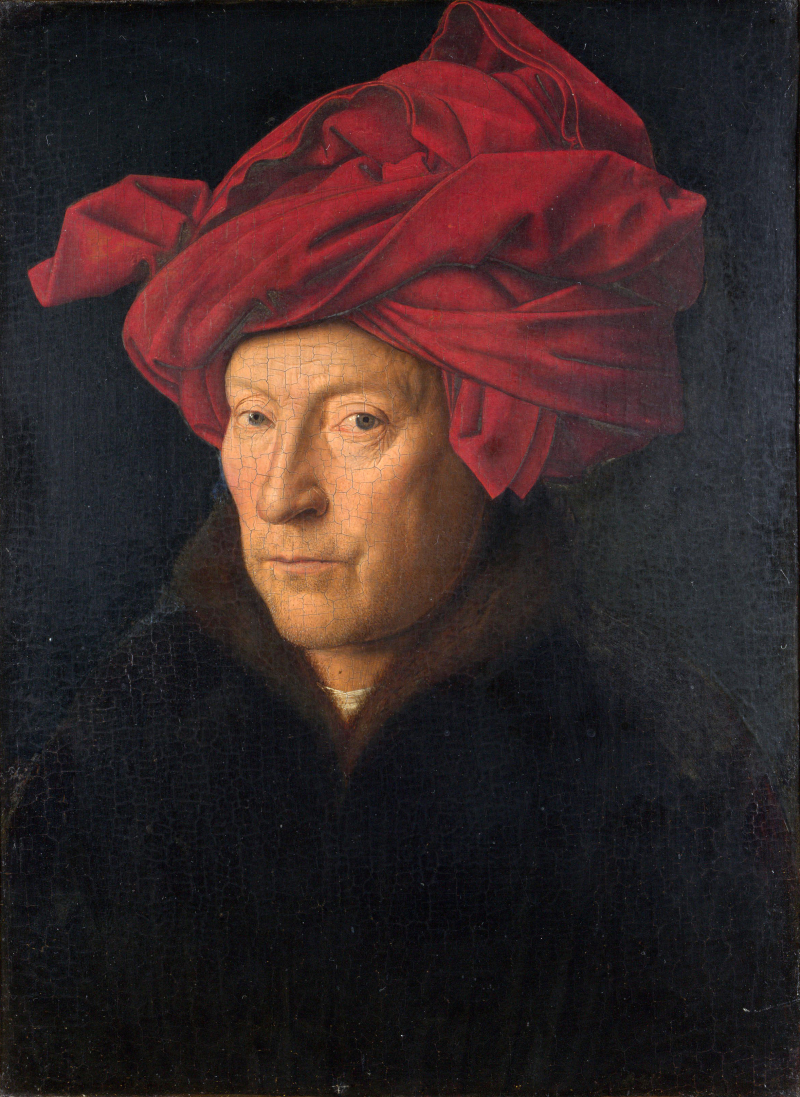
https://en.wikipedia.org/ -
The triptych oil painting on oak panel created by the Early Netherlandish master Hieronymus Bosch between 1490 and 1510, between the ages of 40 and 60, is known today as The Garden of Earthly Delights. Since 1939, it has been kept in the Museo del Prado in Madrid, Spain.
Bosch created three substantial triptychs that are readable from left to right and in which each panel contributed significantly to the overall meaning. These three pieces each address different yet related historical and religious subjects. The left and right panels of triptychs from this era frequently depict Eden and the Last Judgment, respectively, with the central panel containing the major topic. Triptychs from this era were typically designed to be read consecutively. Although it is unknown if The Garden was intended to serve as an altarpiece, it is generally believed that the extreme subject matter of the inner center and right panels makes it unlikely that it was meant to be used in a church or monastery and was instead commissioned by a lay patron due to its extreme nature.
Generally speaking, this weird triptych is seen as a distant precursor to surrealism. In actuality, it's the expression of a late medieval artist who thought that Heaven, Hell, and the Devil were actual places. The left panel of the three images portrays Christ delivering Eve to Adam, while the right panel displays the wrath of Hell; it is less clear whether the middle panel shows Heaven. The damned are attacked by giant ears brandishing phallic knives in Bosch's vivid depiction of Hell, while a bird-beaked bug king wearing a chamber pot as a crown sits on the throne and consumes the unfortunate before swiftly defecating them out again. This riot of symbols has generally resisted interpretation, which would explain why it is so popular.Artist: Hieronymus Bosch
Created: 1503 - 1515
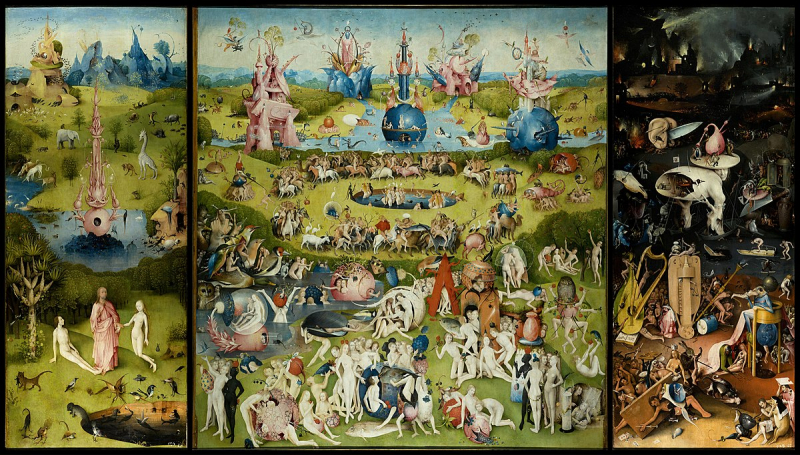
https://en.wikipedia.org/ 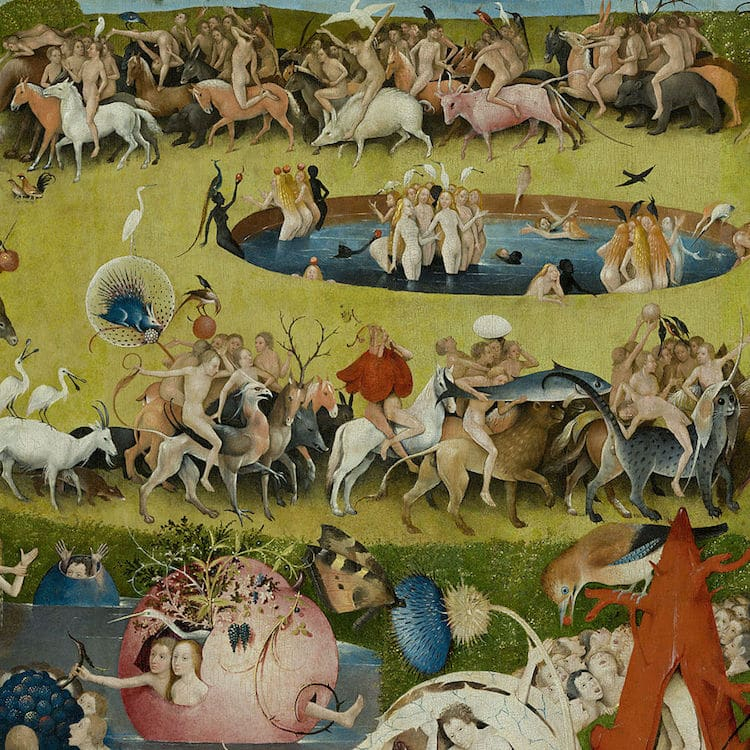
https://mymodernmet.com/ -
Georges Seurat's most well-known painting, A Sunday Afternoon on the Island of La Grande Jatte, was created between 1884 and 1886. It is a key piece of the neo-impressionist movement and a prime example of pointillist technique on a huge canvas. Many Parisians are depicted in Seurat's composition relaxing at a park along the Seine. It is a part of the Art Institute of Chicago's collection.
The iconic image by Georges Seurat, which evokes the Paris of the Belle Epoque, really shows a working-class suburban scene outside the city's core. Contrary to the bourgeois depictions of his Impressionist contemporaries, Seurat frequently made this milieu the subject of his paintings. Seurat chose the idea of eternal permanence found in Greek sculpture above the capture-the-moment style of Manet, Monet, and Degas. And that is just what you get in this procession of individuals that resembles a frieze; their immobility is consistent with Seurat's intention to create a classical landscape in modern form.
The painting debuted in May 1886 at the eighth (and final) Impressionist exhibition before taking center stage in August 1886 at the second Salon of the Société des Artistes Indépendants, which Seurat had founded in 1884. Seurat, who largely charted his own steady route, was incredibly disciplined, perpetually somber, and reclusive to the point of secrecy. With La Grande Jatte, he allegedly succeeded in changing the course of art history, which was one of his goals as a painter.Artist: Georges Seurat
Created: 1884–1886
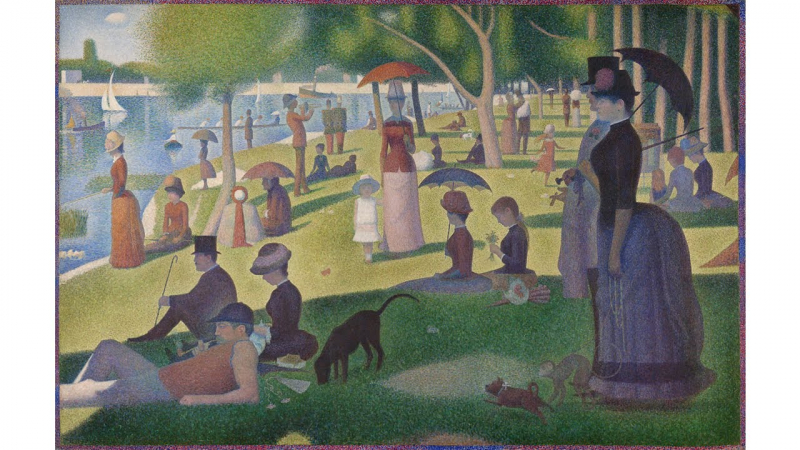
https://www.youtube.com/ 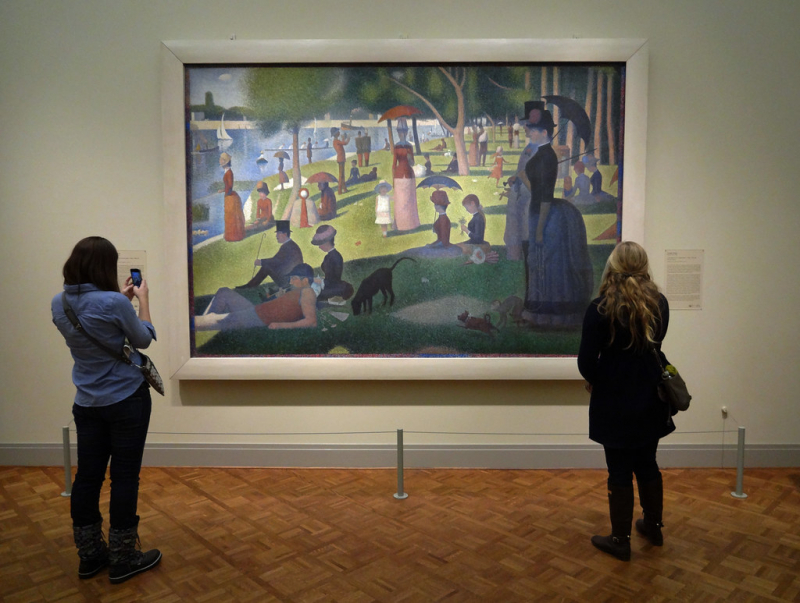
https://www.flickr.com/ -
Pablo Picasso from Spain painted a sizable oil painting titled Les Demoiselles d'Avignon in 1907. The painting, which is a part of the Museum of Modern Art's permanent collection, depicts five naked women working as prostitutes in a brothel on Carrer d'Avinyó in Barcelona, Spain. This is one of the most famous paintings of all time.
Les Demoiselles d'Avignon, considered the founding work of 20th-century art, marked the beginning of the modern era by blatantly departing from the Western tradition of representational painting and incorporating references to the African masks that Picasso had seen in the Palais du Trocadro, Paris's ethnographic museum. El Greco's The Vision of Saint John (1608–14), which is currently on display at the Metropolitan Museum of Art, is also a part of its compositional DNA.
None of the figures are traditionally feminine, and they are all drawn in an unsettlingly confrontational style. The body contours of the women are jagged and fragmented, giving them a slightly threatening appearance. The person on the left has face traits and attire reminiscent of ancient Egypt or southern Asia. Picasso's native Spain's Iberian culture is depicted in the two figures next to each other, while the two figures to the right have traits similar to those of an African mask. According to Picasso, the evocation of ethnic primitivism in these masks inspired him to "liberate an entirely own artistic style of compelling, even savage intensity."
The early development of cubism and modern art is usually regarded as having been greatly influenced by this proto-cubist piece. Even among the painter's closest collaborators and friends, Les Demoiselles' revolutionary and divisive nature sparked a great deal of resentment and contention. The picture was considered indecent at the time of its initial showing in 1916. The painting, which Picasso created in his studio at the Bateau-Lavoir in Montmartre, Paris, was first displayed in front of the general public in July 1916 at the Salon d'Antin during an exhibition that was curated by the poet André Salmon.
Artist: Pablo Picasso
Created: 1907
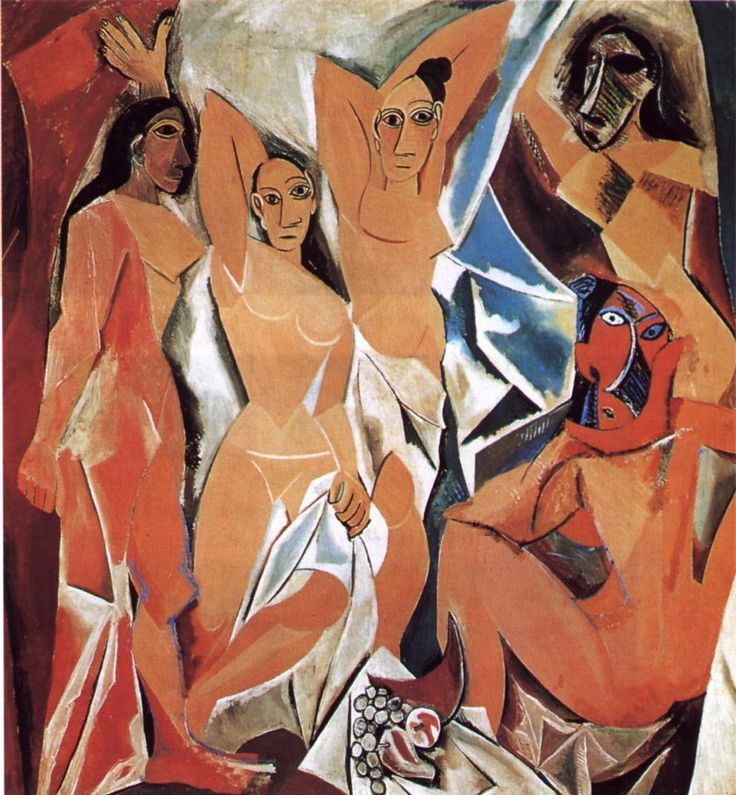
https://en.wikipedia.org/ 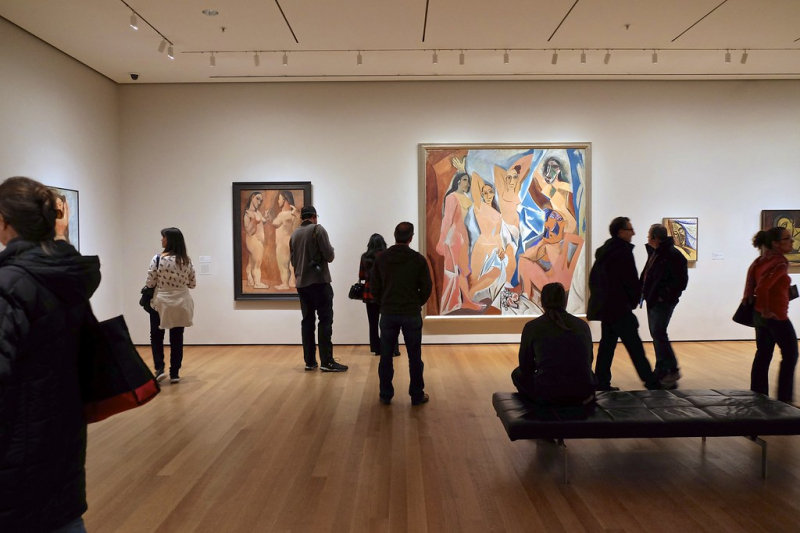
https://www.flickr.com/ -
Pieter Bruegel the Elder finished The Harvesters, an oil painting on wood, in 1565. It shows the harvest, which takes place in late summer, either in July or August. This picture was ordered by Antwerp merchant banker and art collector Nicolaes Jonghelinck.
The artwork is a part of a series of six pieces that show several seasons, five of which are still in existence. The peasants and their work are highlighted, as in many of his paintings, and there are no religious overtones, which were typical of landscape paintings at the time. Notably, the peasants are depicted both producing and consuming food, with some of them seen eating while others are harvesting wheat. A figure in the tree to the far right is picking pears, and pears can be seen on the white cloth in front of the upright sitting woman who is eating bread and cheese. This focus on detail is evident across the entire artwork as a series of ever-finer observations fading into space. It was extraordinary for a time when landscapes served mostly as backdrops for religious paintings.
Numerous activities typical of rural life in Belgium during the 16th century are depicted in the artwork. For instance, a person is shaking fruit from the tree in the far right corner. A group of villagers can be seen engaging in the blood sport of cock throwing in the painting's center left. Since 1919, the artwork has been housed at the Metropolitan Museum of Art in New York. This picture is referred described as the "first modern landscape" and a "watershed in the history of Western art" by the Metropolitan Museum of Art. The people bathing in the pond, the people playing, the kids running around, and the ships off in the distance all convey a sense of distance.Artist: Pieter Bruegel the Elder
Created: 1565
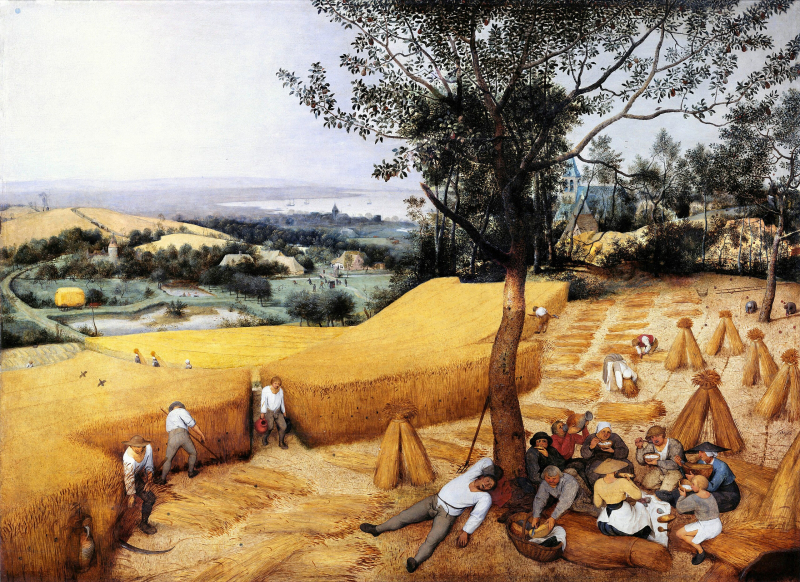
https://en.wikipedia.org/ 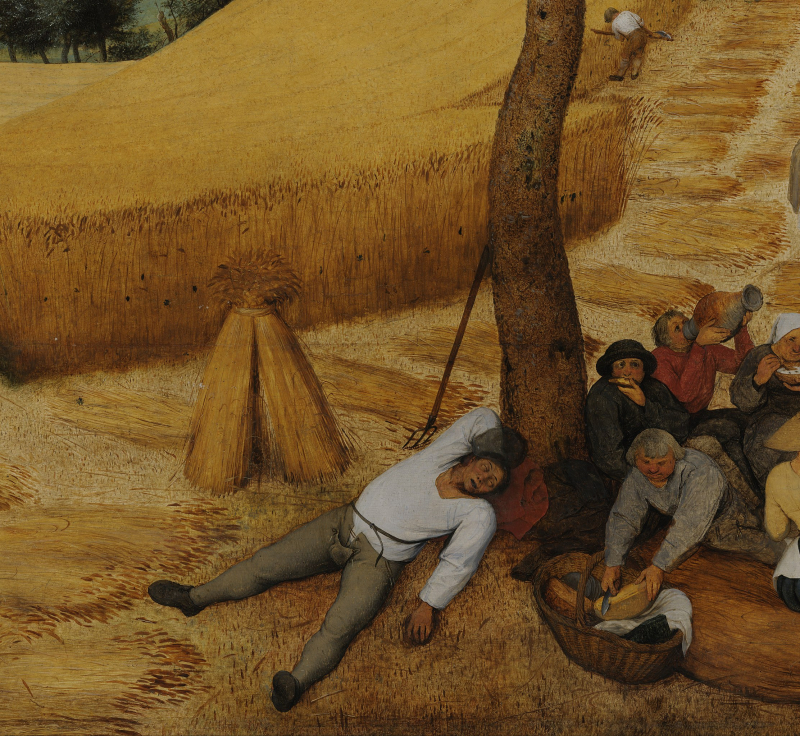
https://commons.wikimedia.org/ -
Édouard Manet painted Le Déjeuner sur l'herbe, a sizable oil painting on canvas, in 1862 and 1863. On a picnic with two fully dressed males in a rural area, it features a woman who is naked and another who is just partially clothed. When the Salon jury of 1863 rejected this painting, Manet grabbed the chance to exhibit it along with two other works in the Salon des Refusés, where it garnered widespread attention and controversy. The piece is currently housed at Paris' Musée d'Orsay.
In the picture, a naked woman and two dressed males are shown having lunch together. She is lighted starkly, and she directs her gaze towards the observer. She sits next to the two males who are costumed as youthful dandies. The woman's garments, a basket of fruit, and a round loaf of bread are set out in front of them like objects in a still life. A woman bathing in a creek in the background is just slightly larger than the individuals in the front. The man to the right is dressed in an indoor-appropriate flat hat with tassel.
There is a lot about the artwork that is unknown, including when Manet actually started painting it, how he came up with the idea, and what kind of preparatory work he conducted. The painting actually remained in Manet's ownership until 1878, when Jean-Baptiste Faure purchased it for just 2,600 Francs, despite the fact that Manet had stated it had originally been valued at 25,000 Francs in 1871.When Manet's painting of a group of Parisians having a picnic made its debut at the Salon des Refusés, an alternate exhibition of works that the jurors of the annual Salon—the official art exhibition of the Académie des Beaux-Arts that established standards for French art—had rejected, there was outrage. The most vocal criticisms of Manet's artwork focused on the portrayal of a naked woman with men wearing modern attire. Le Déjeuner was a flippant parody of classical figuration—an irreverent mash-up of contemporary life and painting tradition—based on themes appropriated from Renaissance masters like Raphael and Giorgione.
Artist: Édouard Manet
Created: 1863
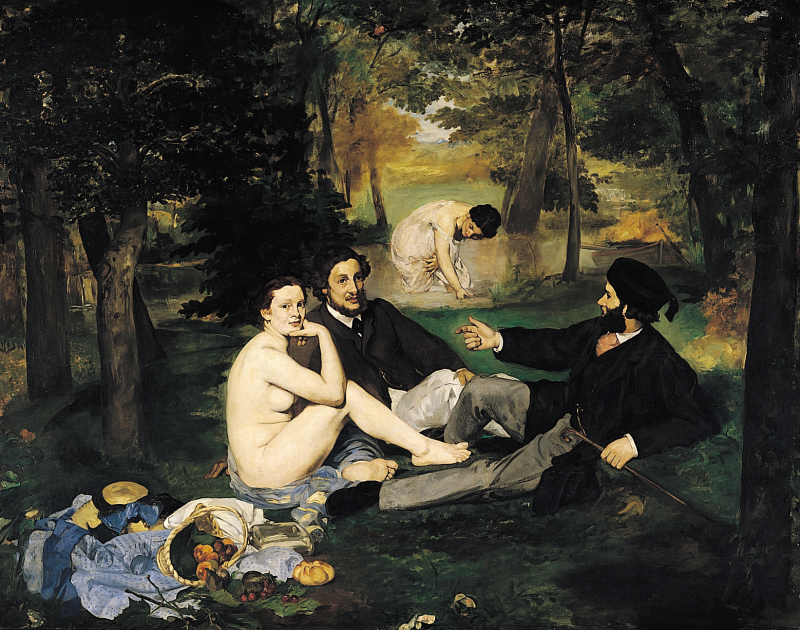
https://en.wikipedia.org/ 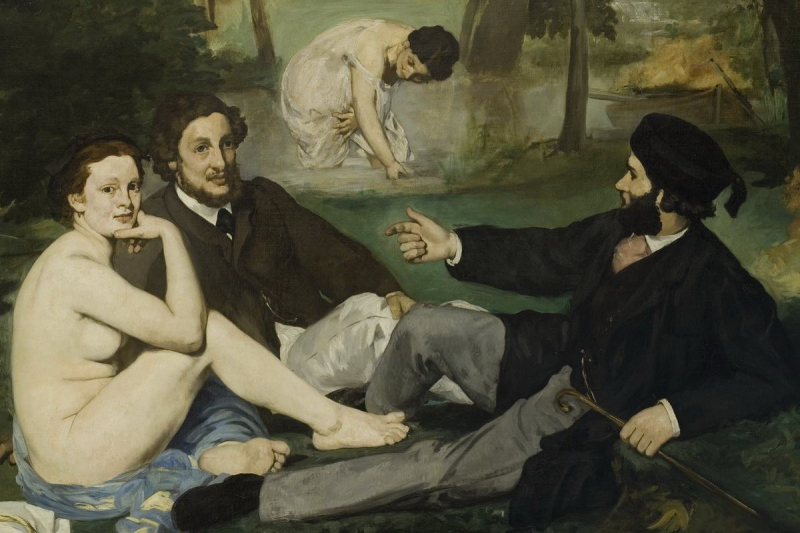
https://www.widewalls.ch/ -
Piet Mondrian painted Composition with Red, Blue, and Yellow in 1930. The borders of colored rectangles are defined by broad, black brushstrokes. The only colors employed in it, except black and white, are red, blue, and yellow, as the title suggests. Composition II in Red, Blue, and Yellow by Mondrian from 1930 is strikingly similar to the work. This is one of the most famous paintings of all time.
Mondrian's work is a small picture (18 inches by 18 inches), but it has a significant impact on art history since it reflects a dramatic reduction of form, color, and composition to their most fundamental elements. In an arrangement of squares and rectangles that prefigured minimalism, Mondrian applied pigment in flat, unmixed patches while keeping his color palette to the fundamental triad (red, yellow, and blue) as well as black and white.
His usage of the word "composition," which refers to how the forms are arranged on the canvas, indicates that he is experimenting with abstract combinations. Prior to the start of the First World War, Mondrian had traveled back to the Netherlands, where he would stay until the conflict was over. He furthered his stylistic development while living in the Netherlands, eschewing compositions that were either too static or too dynamic, and coming to the conclusion that asymmetrical arrangements of geometric (rather than organic) shapes in primary (rather than secondary) colors best represent universal forces. He also coupled his interest in philosophy, spirituality, and his creation of an abstract style with his conviction that abstraction was advancing humanity.
Artist: Piet Mondrian
Created: 1930
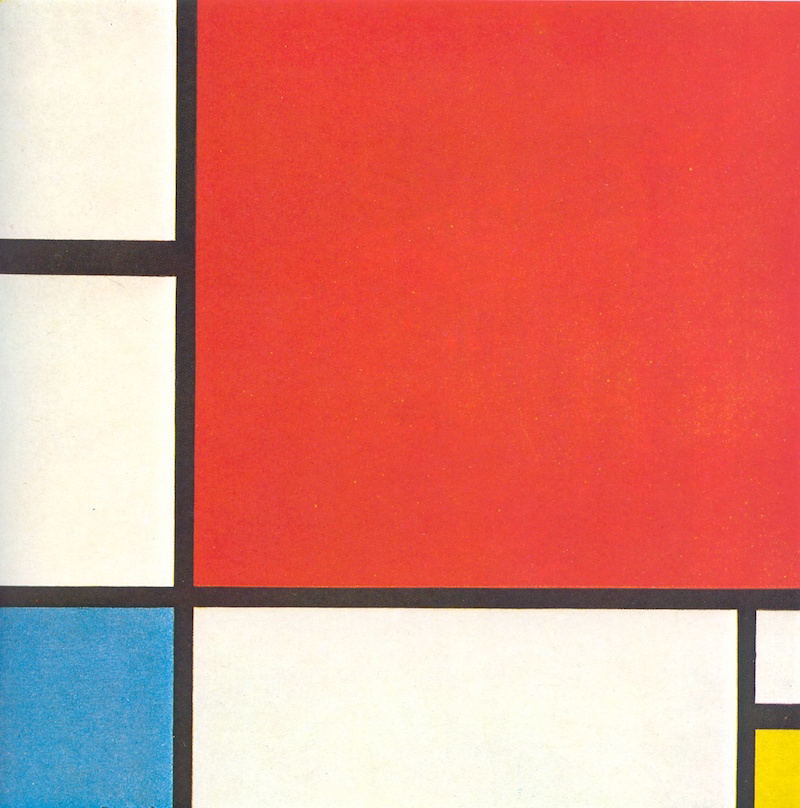
https://getdailyart.com/ 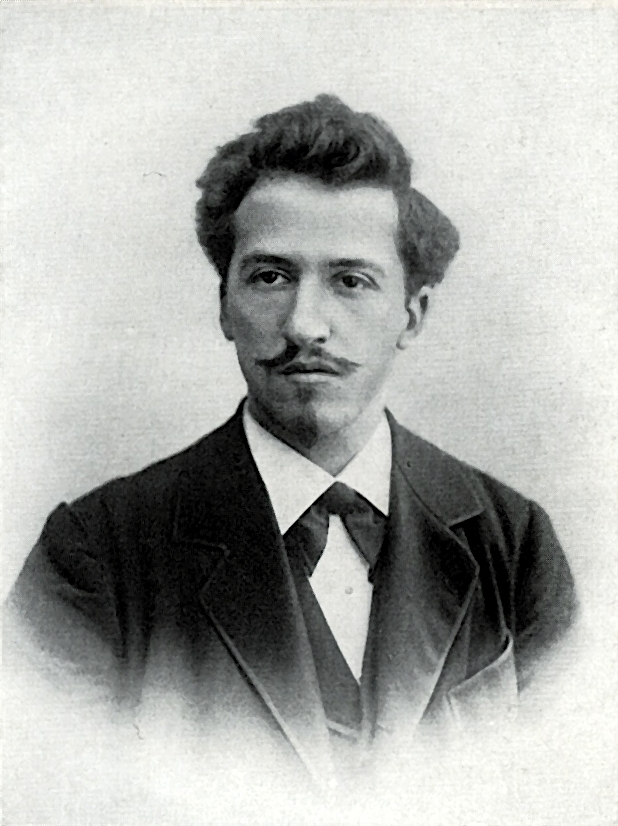
https://en.wikipedia.org/ -
Diego Velázquez, the most prominent artist of the Spanish Golden Age, created Las Meninas in 1656 and it is currently on display at the Museo del Prado in Madrid. Its intricate and mysterious design poses doubts about what is genuine and what is an illusion, as well as establishing an ambiguous interaction between the observer and the figures shown. Las Meninas has been one of the most extensively studied works of Western painting as a result of these complexity. Here is The masterpiece by Velázquez, a painting of a painting within a painting, combines several subjects into one: A self-portrait, an almost art-for-art's-sake display of brilliant brush technique, a picture of Spain's royal family and attendants, and an interior scene provide a window into Velázquez's creative environment.
The picture Las Meninas has long been acknowledged as one of the most significant works of Western art. The Royal Academy of Arts president Sir Thomas Lawrence referred to the piece as "the genuine philosophy of the art" in a letter to his successor David Wilkie in 1827. The Baroque painter Luca Giordano claimed that it reflects the "theology of painting." The picture has since been referred to be "Velázquez's pinnacle achievement, a very self-conscious, calculated demonstration of what painting may achieve, and possibly the most searching statement ever made on the potential of the easel painting," according to more current descriptions.
In addition to being a conundrum that perplexes spectators as to what they are actually looking at, Las Meninas is a discourse on the nature of sight. The mirror that hangs on the far wall of the studio and reflects the faces of the Spanish King and Queen is the equivalent of breaking the fourth wall in terms of visual art. This raises the question of where we are in regard to the royal couple because it immediately implies that they are on our side of the picture plane. In the meantime, it's unclear from Velázquez's full-length representation of himself working at his easel whether the artist is using a mirror or not. Are the subjects of Las Meninas staring at us or at themselves, in other words?
Artist: Diego Rodríguez de Silva y Velázquez
Created: 1656 -1657
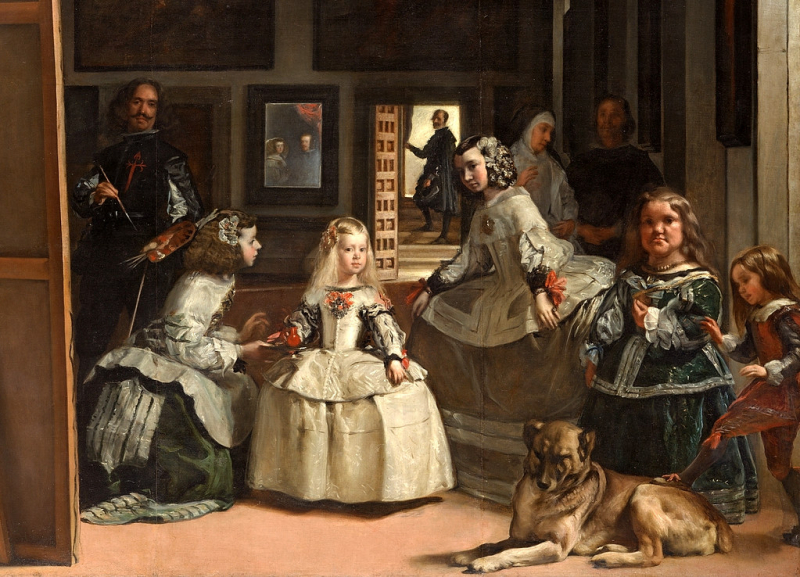
https://www.flickr.com/ 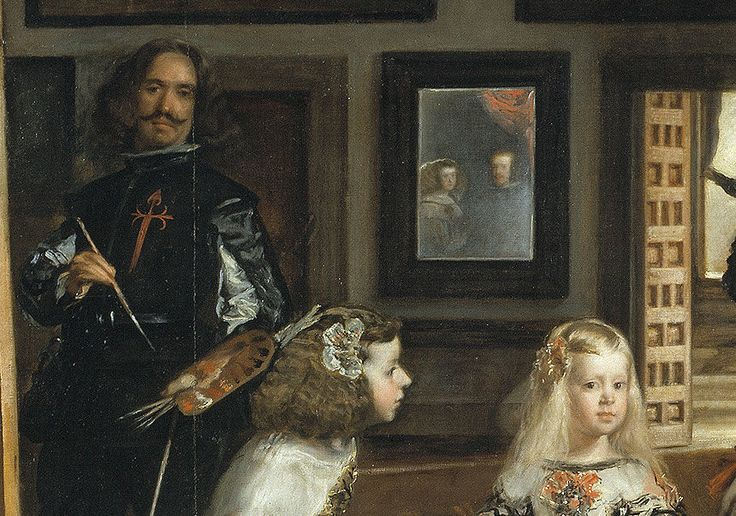
https://www.pinterest.com/ -
Pablo Picasso, a Spanish artist, created a sizable oil painting on canvas titled Guernica in 1937. It is one of his most well-known pieces and is hailed by many art critics as the most stirring and potent anti-war artwork ever created. It is on display in Madrid's Museo Reina Sofia. The painting, which is 7.76 meters (25 ft 6 in) wide and 3.49 meters (11 ft 5) tall, depicts the misery brought on by violence and disorder. A gored horse, a bull, screaming ladies, a dead baby, a severed soldier, and flames are prominent elements in the composition.
Picasso created Guernica in response to the bombing of Guernica on April 26, 1937, which took place in the Basque Country of northern Spain at the behest of the Spanish Nationalists. Guernica was destroyed by Nazi Germany and Fascist Italy. When it was finished, Guernica was displayed at the Spanish booth at the 1937 Paris International Exposition before moving on to other locations across the globe. Funds for the Spanish war effort were raised through the traveling exhibition. The picture quickly rose to fame and received high praise, which helped draw attention to the Spanish Civil War on a global scale.
After Franco's death in 1975, Picasso lent the artwork to MoMA with the understanding that it would be returned to his native Spain once democracy had been restored. This was accomplished in 1981. (Picasso himself died two years before that.) The painting is now kept in Madrid's Museo Nacional Centro de Arte Reina Sofia.
Artist: Pablo Picasso
Created: 1937
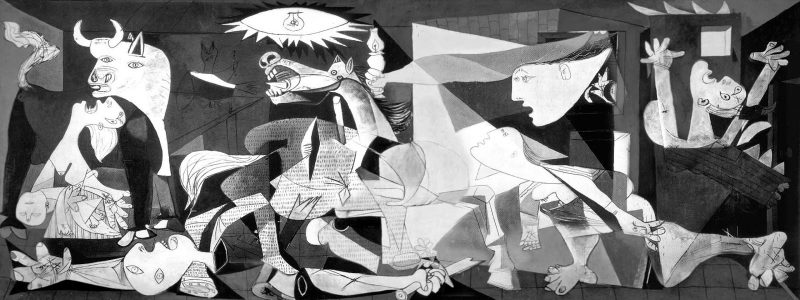
https://classicartreview.wordpress.com/ 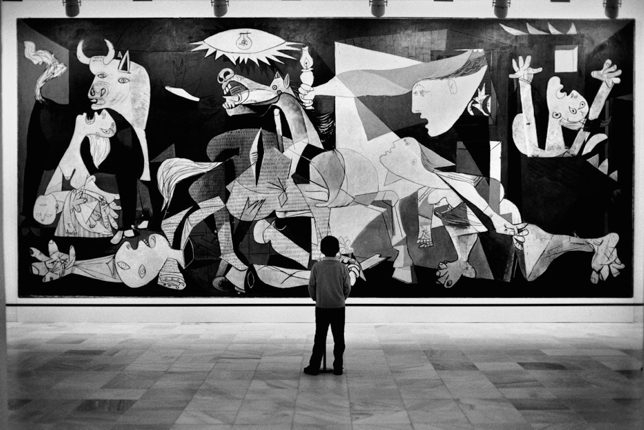
https://interlude.hk/

















